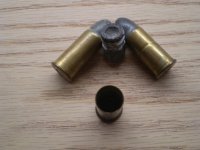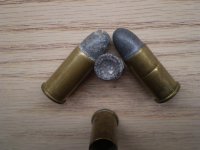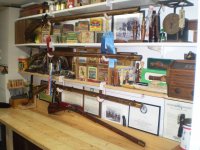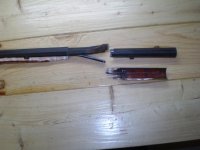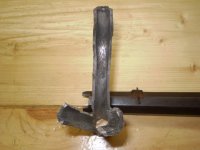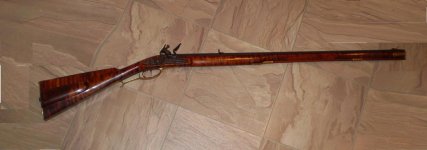Gentlemen,
I've been working out the specifics on an acceptable load for my 1st Model .44 D.A. revolver. Just wanted to pass along a little information regarding some recent testing. I read an article published by Mike Venturio regarding the use of black powder in his earlier model single action revolvers, trying to duplicate the original black powder load. It seems he had good luck and proper f.p.s. using 18 gr. of Swiss 3F behind a 200 gr. lead projectile. I load up some older excellent condition W.R.A. ballon cases I had in quantity with this load and WLP primers and found that this is an excellent load for use in any older S&W blackpowder era .44 caliber revolver. I used my 2nd Model H.E. as a test mule and found that this blackpowder load is ever bit as potent and accurate as the HSM "cowboy" .44 Russian cartridges. I shot this load in demonstration to a few other pistol shooters and found them to be impressed with the noise and concussion, compared to smokeless HSM "cowboy" loads. Target-wise its a toss-up, although with practice and time I'm sure the black powder load will be as effective as the smokeless. Cleaning my equipment is just part of the hobby, you shouldn't let the black powder residue rest anywhere for too long unless your fond of patina.
I've been working out the specifics on an acceptable load for my 1st Model .44 D.A. revolver. Just wanted to pass along a little information regarding some recent testing. I read an article published by Mike Venturio regarding the use of black powder in his earlier model single action revolvers, trying to duplicate the original black powder load. It seems he had good luck and proper f.p.s. using 18 gr. of Swiss 3F behind a 200 gr. lead projectile. I load up some older excellent condition W.R.A. ballon cases I had in quantity with this load and WLP primers and found that this is an excellent load for use in any older S&W blackpowder era .44 caliber revolver. I used my 2nd Model H.E. as a test mule and found that this blackpowder load is ever bit as potent and accurate as the HSM "cowboy" .44 Russian cartridges. I shot this load in demonstration to a few other pistol shooters and found them to be impressed with the noise and concussion, compared to smokeless HSM "cowboy" loads. Target-wise its a toss-up, although with practice and time I'm sure the black powder load will be as effective as the smokeless. Cleaning my equipment is just part of the hobby, you shouldn't let the black powder residue rest anywhere for too long unless your fond of patina.

